Pyoderma Gangrenosum
History:
A 29-year-old man presented with a three-year history of a painful and recurrent left posterior calf wound. The patient had a past medical history of Factor V Leiden, chronic bilateral lower extremity deep vein thromboses, and HIV. The patient was never a smoker, but did use marijuana. When the wound first appeared in 2015, it was healed with local wound care. However, in 2017, there was a spontaneous recurrence of the wound that occurred while wearing compression stockings.
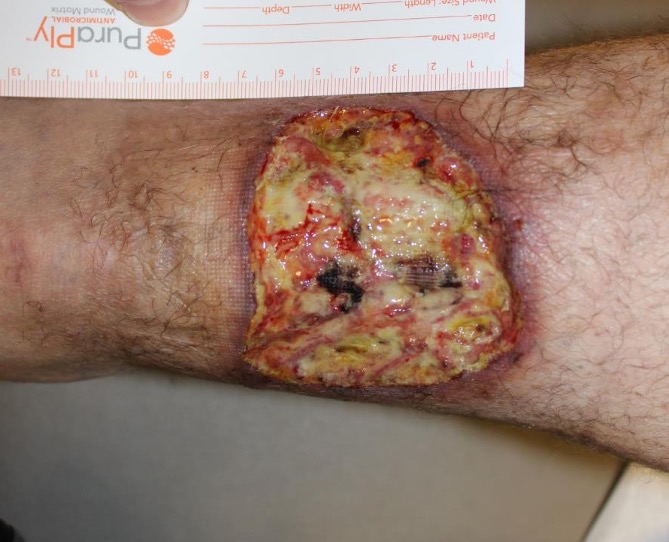
Fig.1. 29 yo man with a 3-year history of a recurrent left posterior calf wound measuring 9x7cm.
Findings:
Left posterior/distal calf wound measuring 9 x 7 cm. The wound had erythematous undermined edges and an ulcerated center with fibrinous exudate. No bone or tendon exposure was found.
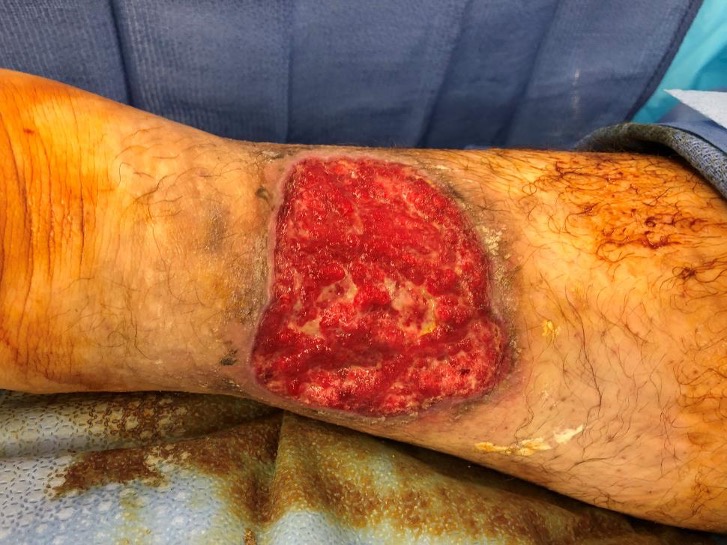
Fig.2. A 29-year-old man with a recurrent left posterior calf wound immediately post-debridement. Tissue biopsy of the wound revealed mixed pyoderma gangrenosum and vasculitis.
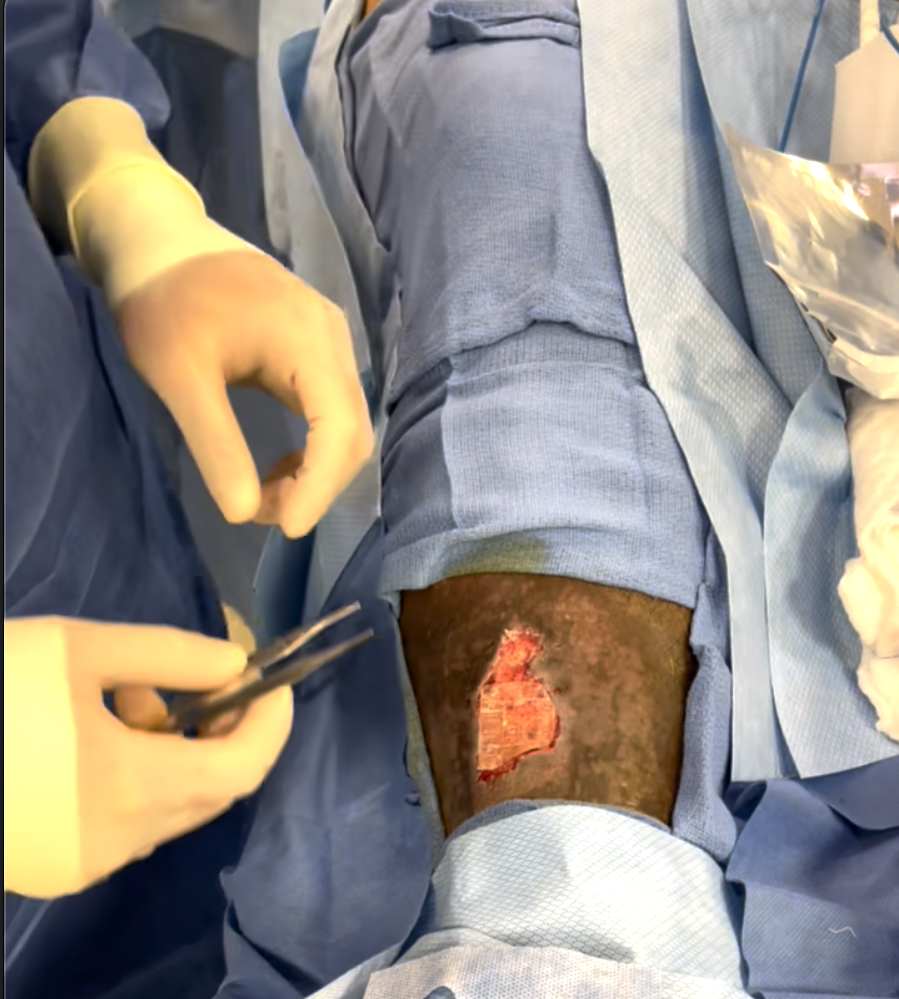
Fig.3. Intra-operative application of dehydrated human amnion/chorion membrane to a lower leg wound of a 29 year old man with pyoderma gangrenosum.
Differential Diagnoses:
Workup Required:
Pyoderma gangrenosum is a diagnosis of exclusion. Routine workup included complete blood count, inflammatory markers erythrocyte sedimentation rate (ESR) and C-reactive protein (CRP), skin biopsy, and wound cultures. Other studies included doppler venous and arterial ultrasounds, liver and renal function tests, hepatitis screen, vasculitis, and hypercoagulability workups. Colonoscopy was considered but deemed not necessary in the absence of any signs of malignancy.
Plan:
Optimize wound care, avoid surgical trauma, manage pain adequately, and choose effective medical management to reduce the aberrant inflammatory response.
Expertise Needed:
Treatment:
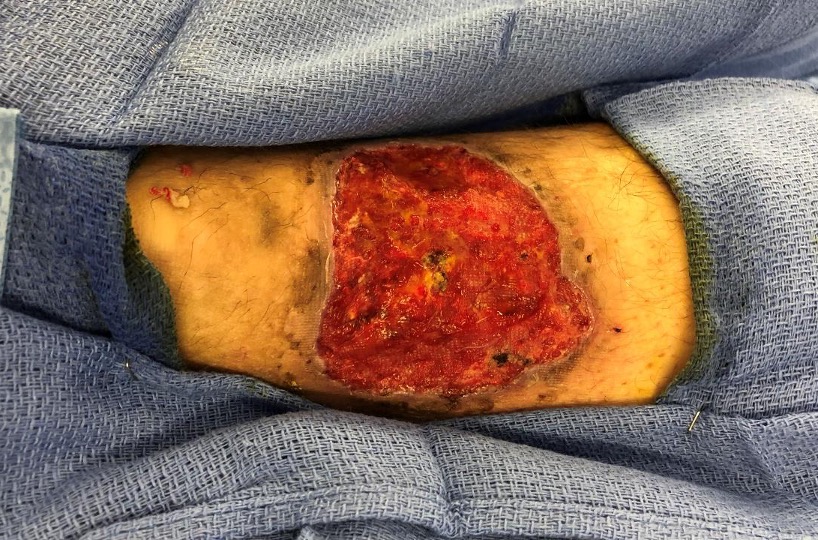
Fig.4. 29-year-old man with a recurrent left lower extremity wound, diagnosed with pyoderma gangrenosum. Status post 1-week of treatment with dehydrated human amnion/chorion membrane (dHACM). The patient went on to receive a split-thickness skin graft.

Fig.5. 29-year-old man with a recurrent left lower extremity wound, diagnosed with pyoderma gangrenosum. Status post 1-week of treatment with dehydrated human amnion/chorion membrane (dHACM). This is an image 5 days post-op from dHACM placement and after application of a split-thickness skin graft.
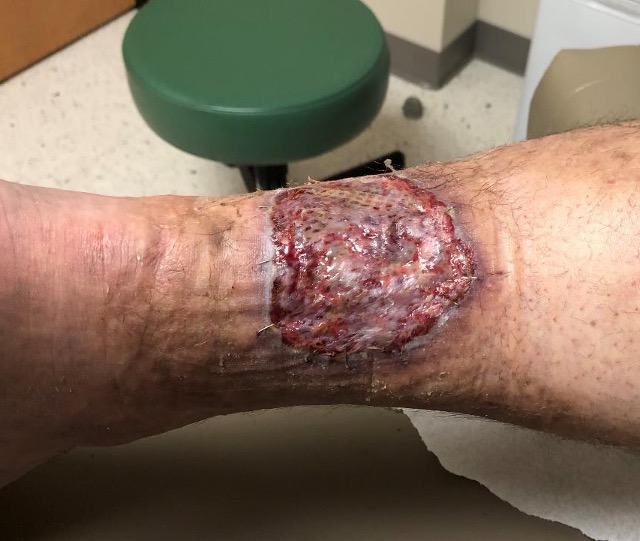
Fig.6. 29-year-old man with a recurrent left lower extremity wound, diagnosed with pyoderma gangrenosum. Status post 12 days of treatment with dehydrated human amnion/chorion membrane (dHACM) and split-thickness skin graft.
Follow Up:

Fig.7. 29-year-old man with a recurrent left lower extremity wound, diagnosed with pyoderma gangrenosum. Status post 21 days of treatment with dehydrated human amnion/chorion membrane and split-thickness skin graft.

